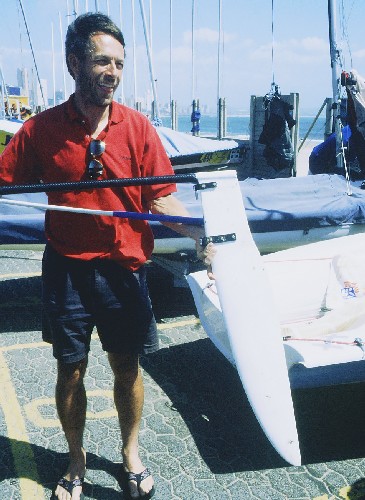
Krister's rudder can ordinary mortals make it
around the course with foils this small?
2000 Worlds Gear

Krister's rudder can ordinary mortals make it
around the course with foils this small?
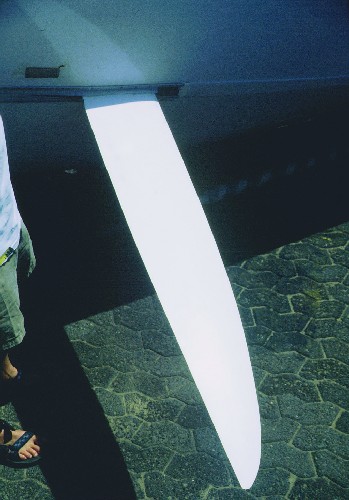
Krister's centerboard. The bow is to the right.
This is Krister's Gilleleje CB but he lengthened it by
approximately one foot, as it was too short and too small

a Waterat HA centreboard
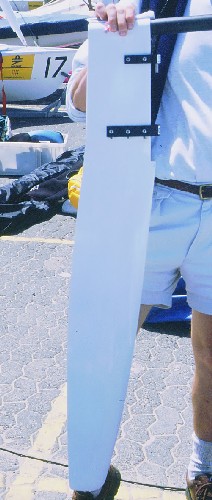
a Waterat HA rudder

Fredriksen jib tracks on Barker/Cripps 505

|
A KISS Rondar ready to race. This has had Tacktick Racemaster (twin display model) compass added, and also has a triple handed twing system added. The remaining control systems are typical of the KISS model. This KISS also has a Waterat HA centerboard in it. The HA foils stick up above the CB cap at the front more than the normal foils. |
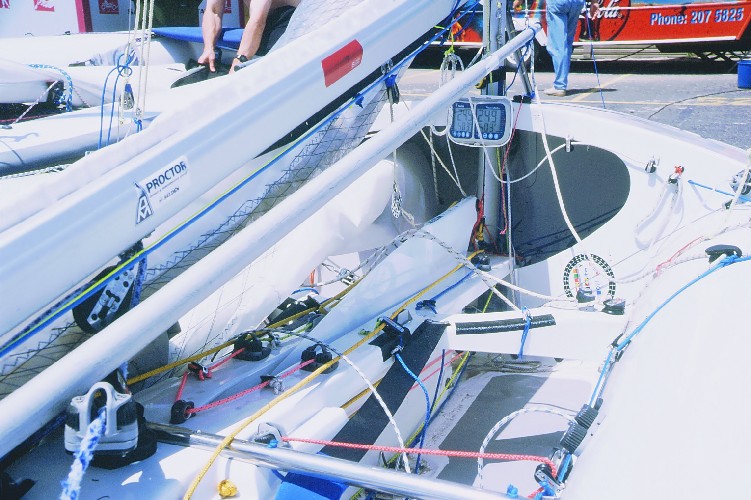
KISS Rondar
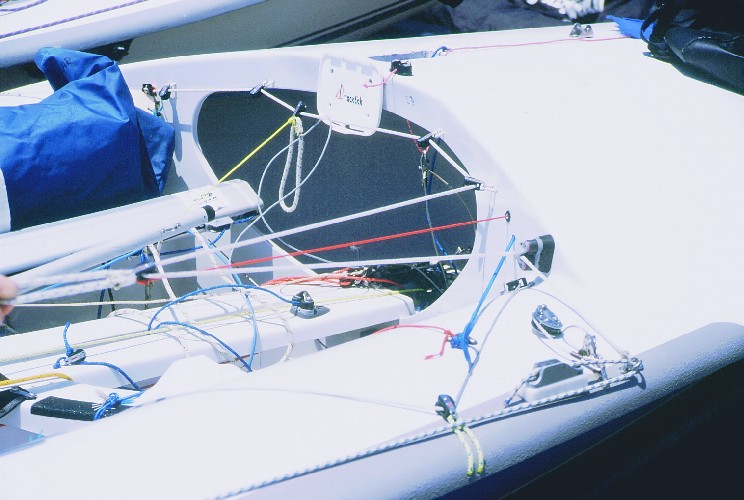
Triple handled twing
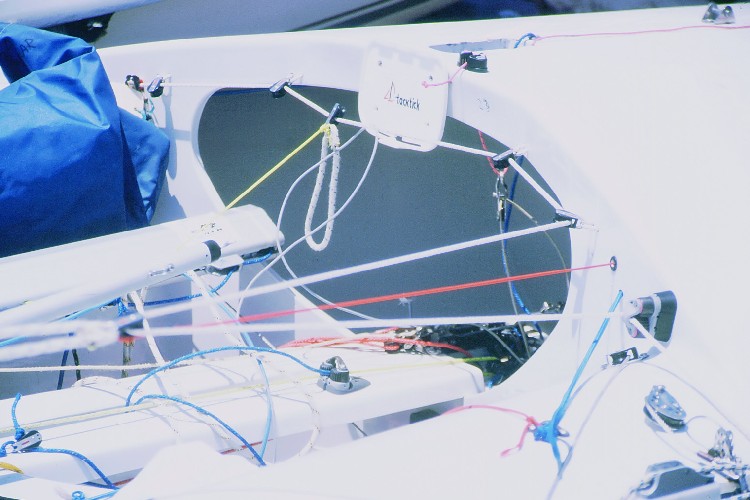
Triple handled twing system

Vectran trapeze "wires".
These are attached to metal loops on the shroud T-hook fitting

Vectran trapeze "wires"
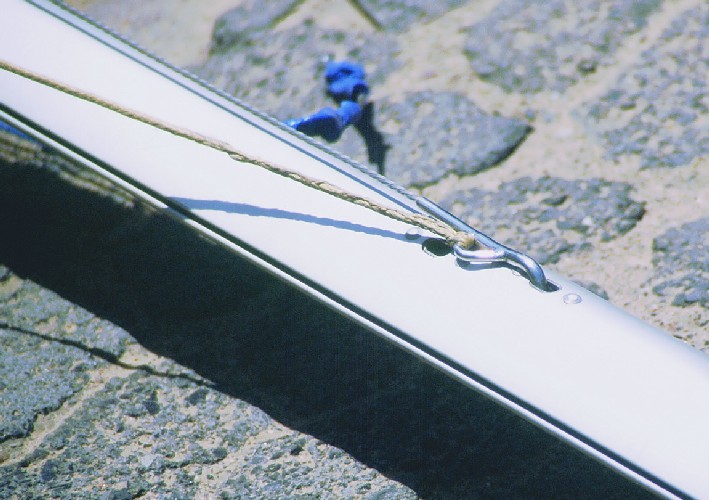
Vectran trapeze "wires"

Thomas and Krister, International 505 Class World Champions

Thomas and Krister
Photos by Roy Dunster and on our web site with Roy's agreement. A few of these photos were used in Sailing World and are included here with Sailing World's permission as well. As competitors waited for the RC to abandon the last day's racing due to very high wind and seas, Roy Dunster took some photos in the dinghy park. The new Van Munster 505 attracted his attention. Many competitors were intrigued by the foil development that some top teams were doing. The first three teams (and several others in the top 15) were using high aspect ratio (deeper and lower in area) than has been the norm. 2000 World Champions Krister Bergstrom/Thomas Moss's centreboard appeared to be the smallest in area and the smallest in chord. Mike Martin and Howie Hamlin's centreboards may have been deeper, and were not as small at the root chord. The teams experimenting with high aspect ratio centreboards also had smaller and narrower rudders. These high aspect ratio foils were quite different from the foils used by Barker/Cripps and Pinnell/Powell. Krister led control lines so as to put as much of the weight in the centre of the boat. Many British 505s had the athwartship Fredrickson tracks for moving the jib lead in and out. Barker/Cripps had a hiking "strap" in the back of the boat, especially for Durban conditions. A number of US teams use double or triple handled twing systems as seen on this KISS Rondar. One pull on the windward handle uncleats the windward twing and pulls in and cleats the leeward twing. You pull the handle just before, or as, you gybe. The triple handled varient retains the center twing handle such that both twings can be pulled down and cleated together, for a twings down gybe, or for tidying up after a douse. Vectran or Spectra trapeze "wires" are common. This spar has them hung on loops on the shroud T-hooks. Vectran is stronger than Spectra, but more subject to UV degredation. Spectra "wires" stretch nearly 10 cm the first time or two you use them. |
— www. int505.se —
Uppdaterad 2021-05-20